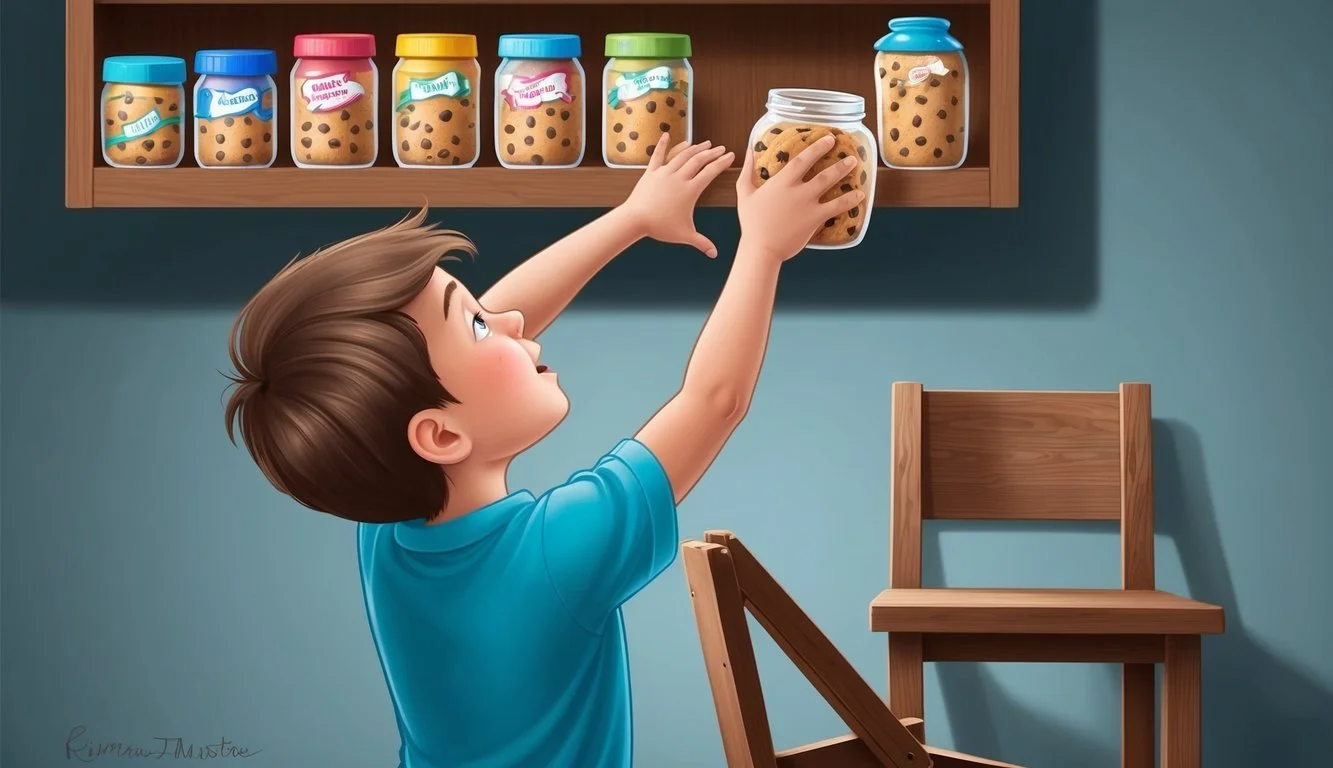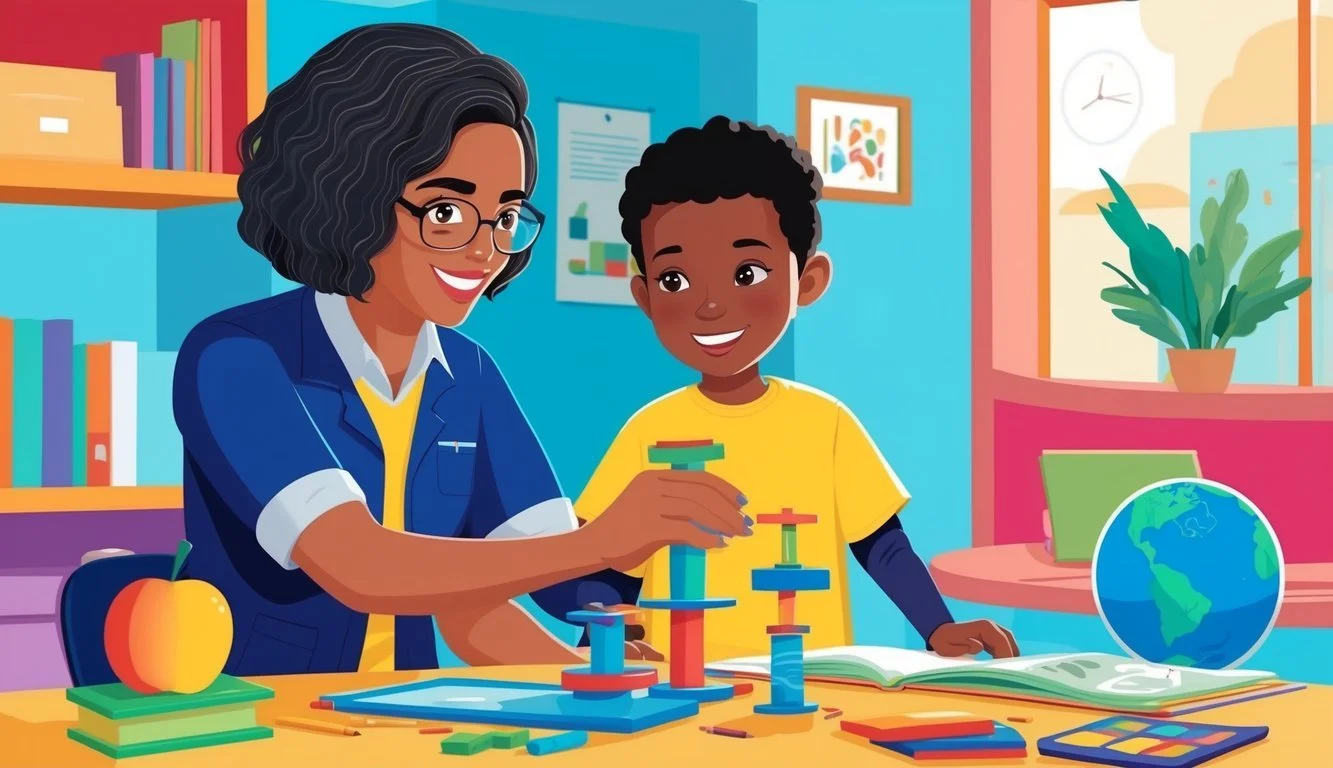Navigating Impulsivity in 10-Year-Olds: Tips for Parents and Educators
Impulsivity in 10-year-olds can be a challenging behavior for parents and educators to manage. At this age, children are expected to have developed a certain level of self-control, yet some may still struggle with acting without thinking. Children who consistently disrupt class, have difficulty making friends, or frequently act without considering consequences may be dealing with significant impulsivity issues.
Understanding the causes of impulsive behavior in pre-teens is crucial for developing effective strategies to address it. Factors such as ADHD, developmental delays, or environmental stressors can contribute to impulsivity. Recognizing these underlying factors helps in tailoring appropriate interventions and support systems for the child.
Parents and caregivers can employ various techniques to help 10-year-olds manage their impulses. Clear communication, consistent rules, and positive reinforcement are essential. Additionally, teaching problem-solving skills and encouraging self-reflection can empower children to make more thoughtful decisions. With patience and the right approach, impulsive behaviors can be improved, leading to better social interactions and academic performance.
Understanding Impulsivity in Children
Impulsivity in children refers to acting without thinking or considering consequences. It's a common developmental trait that typically diminishes as kids mature and gain better self-control.
Children with impulsive tendencies often struggle to wait their turn, frequently interrupt others, and have difficulty sitting still. They may also engage in risky behaviors without considering potential outcomes.
Age plays a crucial role in expectations for impulse control. A 3-year-old grabbing toys is normal, while a 7-year-old consistently disrupting class may indicate more significant issues.
Impulsive behavior can make children seem younger than their actual age. An 8-year-old might display self-control more typical of a 5-year-old, which can be frustrating for both the child and adults.
Several factors contribute to impulsivity in children:
Brain development
Attention deficit hyperactivity disorder (ADHD)
Anxiety or mood disorders
Learning disabilities
Environmental factors
Understanding impulsivity helps parents and caregivers approach the issue with patience and empathy. Recognizing that impulsive behaviors are not intentional misbehavior is key to providing effective support.
Structured environments and clear expectations can significantly benefit impulsive children. Consistent routines and rules help them develop self-regulation skills and improve decision-making abilities.
Factors Contributing to Impulsivity in 10-Year-Olds
Impulsivity in 10-year-olds stems from a complex interplay of cognitive, emotional, and environmental factors. Brain development, emotional regulation skills, external influences, and physical health all play crucial roles in shaping a child's impulse control abilities.
Cognitive Development
At age 10, children's brains are still developing, particularly in areas responsible for decision-making and self-control. The prefrontal cortex, which governs executive functions, continues to mature into early adulthood.
This ongoing development can lead to:
Difficulty in weighing consequences
Challenges in long-term planning
Struggles with delaying gratification
Some 10-year-olds may display impulsivity more typical of younger children due to individual differences in brain development. Cognitive exercises and games can help strengthen impulse control skills during this critical period.
Emotional Regulation
Emotional maturity significantly impacts a 10-year-old's ability to control impulses. Children at this age are still learning to manage strong emotions effectively.
Key aspects of emotional regulation include:
Recognizing and labeling feelings
Developing coping strategies
Understanding appropriate emotional responses
10-year-olds who struggle with emotional regulation may act out impulsively when feeling frustrated, angry, or excited. Teaching mindfulness techniques and providing a supportive environment can aid in developing better emotional control.
Environmental Influences
A child's surroundings play a significant role in shaping impulsive behaviors. Family dynamics, peer interactions, and school environment all contribute to a 10-year-old's impulse control abilities.
Factors that may increase impulsivity:
Inconsistent discipline at home
Exposure to impulsive behavior models
High-stress environments
Lack of structure or routine
Positive reinforcement for good behavior and clear, consistent expectations can help reduce impulsive actions. Creating a structured environment with predictable routines can also support impulse control development in 10-year-olds.
Role of Sleep and Nutrition
Physical health factors, particularly sleep and nutrition, can significantly impact a 10-year-old's impulse control. Inadequate sleep or poor diet may exacerbate impulsive tendencies.
Sleep's impact on impulsivity:
Insufficient sleep can lead to irritability and reduced self-control
Regular sleep patterns support better emotional regulation
10-year-olds typically need 9-11 hours of sleep per night
Nutrition's role:
Balanced meals help maintain stable blood sugar levels
Some food additives may increase hyperactivity in sensitive children
Hydration is crucial for optimal brain function
Establishing healthy sleep habits and providing nutritious meals can support better impulse control in 10-year-olds. Parents should prioritize consistent bedtimes and limit caffeine and sugar intake, especially in the evening.
Assessment and Diagnosis
Identifying impulsivity in 10-year-olds involves comprehensive evaluations from multiple perspectives. These assessments help determine the severity and impact of impulsive behaviors on a child's daily functioning.
Behavioral Assessments
Behavior rating scales provide valuable insights into a child's impulsivity across different settings. Parents and teachers complete standardized questionnaires about the child's actions and reactions. Common tools include the Behavior Assessment System for Children (BASC) and the Conners Rating Scales.
These assessments measure frequency and intensity of impulsive behaviors. They also evaluate related issues like hyperactivity and inattention. Observations in natural environments, such as classrooms or playgrounds, complement these ratings.
Psychologists may use computerized tests to measure specific aspects of impulse control. The Continuous Performance Test (CPT) assesses a child's ability to sustain attention and inhibit responses over time.
Clinical Interviews
Mental health professionals conduct in-depth interviews with the child and parents. These discussions explore the child's developmental history, family dynamics, and current concerns.
Clinicians ask about specific incidents of impulsive behavior and their consequences. They inquire about the child's emotional regulation, social skills, and academic performance. The interview also covers potential stressors or life changes that may contribute to impulsivity.
The clinician assesses for co-occurring conditions like ADHD, anxiety, or learning disorders. This holistic approach helps determine if impulsivity is a primary issue or symptom of another underlying condition.
Educational Evaluations
School psychologists or special education teams conduct comprehensive assessments of the child's academic skills and learning style. These evaluations include standardized achievement tests and curriculum-based measures.
Assessors examine how impulsivity affects the child's classroom performance and peer relationships. They review school records, including grades, disciplinary actions, and teacher comments.
Cognitive tests may be administered to assess the child's executive functioning skills, including impulse control and decision-making abilities. Results help in developing targeted interventions and accommodations to support the child's learning needs.
Strategies for Managing Impulsivity
Effectively managing impulsivity in 10-year-olds requires a multi-faceted approach. Key strategies focus on behavioral interventions, parental support, mindfulness techniques, and school-based programs.
Behavioral Interventions
Behavioral interventions play a crucial role in helping impulsive children develop better self-control. Positive reinforcement is a powerful tool. When a child exhibits good impulse control, praise them immediately. This reinforces the desired behavior.
Setting clear rules and expectations is essential. Create a visual chart outlining household rules and consequences. This provides structure and helps children understand boundaries.
Time-out techniques can be effective for younger children. For 10-year-olds, consider using a "calm down corner" instead. This space allows them to regain composure when feeling overwhelmed.
Implementing a token economy system can motivate good behavior. Children earn tokens for demonstrating self-control, which they can exchange for privileges or small rewards.
Parental Guidance and Support
Parents play a vital role in managing their child's impulsivity. Consistency is key. Establish and maintain a regular daily routine to provide structure and predictability.
Model good impulse control. Children learn by example, so demonstrate patience and thoughtful decision-making in your own actions.
Use "if-then" statements to help children understand consequences. For example, "If you finish your homework without interruptions, then you can have 30 minutes of screen time."
Encourage problem-solving skills. When faced with a challenge, guide your child through the process of identifying the problem, brainstorming solutions, and choosing the best option.
Provide opportunities for your child to practice delayed gratification. This could involve saving allowance money for a larger purchase or waiting to open gifts on special occasions.
Mindfulness and Self-Control Techniques
Teaching mindfulness can significantly improve impulse control. Introduce simple breathing exercises to help your child calm down when feeling overwhelmed or frustrated.
Practice the "stop and think" technique. Teach your child to pause before reacting, consider consequences, and choose the best course of action.
Encourage physical activities that promote self-control, such as martial arts or yoga. These practices emphasize discipline and mindfulness.
Use visualization techniques. Ask your child to imagine a "pause button" they can press when feeling impulsive. This mental image can help them stop and think before acting.
Implement regular "quiet time" in your daily routine. This allows children to practice being still and calm, enhancing their ability to regulate emotions and impulses.
School-Based Programs
Many schools offer programs specifically designed to help children with impulsivity. Social skills groups can teach children how to interact appropriately with peers and manage their impulses in social situations.
Individualized education plans (IEPs) or 504 plans may be beneficial for children whose impulsivity significantly impacts their learning. These plans can include accommodations such as preferential seating or extended time for assignments.
Collaborate with teachers to implement behavior charts or daily report cards. These tools provide consistent feedback on a child's impulse control throughout the school day.
Encourage participation in structured extracurricular activities. Sports teams, clubs, or music groups can provide opportunities for children to practice following rules and working cooperatively with others.
Consider after-school programs that focus on executive functioning skills. These programs can help children develop better planning, organization, and impulse control strategies.
Impact of Impulsivity on Daily Life
Impulsivity significantly affects a 10-year-old's academic performance, social interactions, and family dynamics. Challenges arise in multiple areas of life, requiring targeted strategies to manage impulsive behaviors effectively.
Academic Performance
Impulsive 10-year-olds often struggle to focus during lessons and complete assignments. They may blurt out answers without raising their hand or interrupt the teacher frequently. This behavior can disrupt the classroom and hinder their learning progress.
Difficulty following multi-step instructions is common. Impulsive children tend to rush through work, making careless errors. They may forget to turn in completed homework or lose important school materials.
Time management poses a significant challenge. Procrastination on long-term projects is frequent, leading to last-minute panic and subpar results. These issues can negatively impact grades and academic growth if not addressed.
Social Interactions
Impulsivity affects a 10-year-old's ability to form and maintain friendships. They may struggle with turn-taking in conversations or games, often dominating interactions. Interrupting others or changing topics abruptly can frustrate peers.
Emotional outbursts are more common in impulsive children. They may react strongly to minor setbacks or perceived slights. This can lead to conflicts with classmates and difficulty resolving disagreements peacefully.
Impulsive actions like pushing in line or grabbing objects without asking can alienate potential friends. Social cues may be missed or misinterpreted, making it challenging to navigate complex peer relationships.
Family Dynamics
Impulsivity can strain family relationships and disrupt household routines. Parents may find themselves constantly redirecting or disciplining their 10-year-old, leading to frustration on both sides.
Siblings often bear the brunt of impulsive behaviors. Arguments over shared toys or personal space can escalate quickly. Younger siblings may feel overshadowed, while older ones may resent the extra attention given to managing impulsivity.
Family outings and activities can become stressful. Impulsive children may wander off in public places or have difficulty waiting in lines. This can limit the family's ability to enjoy shared experiences and create positive memories together.
Professional Support and Resources
Professional assistance and specialized resources play a crucial role in managing impulsivity in 10-year-olds. Experts can provide targeted interventions, while support groups offer community connections. Educational materials equip families with practical strategies for daily life.
Child Psychologists and Therapists
Child psychologists and therapists specialize in addressing impulsivity in children. These professionals use evidence-based techniques like cognitive-behavioral therapy to help kids develop self-control skills. They work closely with families to create personalized treatment plans.
Therapists may employ play therapy or art therapy to engage children in a comfortable setting. Regular sessions allow for ongoing assessment and adjustment of strategies. Parents often receive guidance on reinforcing positive behaviors at home.
Some practitioners focus on specific conditions like ADHD, which can contribute to impulsive behaviors. They may collaborate with schools to ensure consistent support across environments.
Support Groups and Organizations
Support groups provide a valuable network for families dealing with impulsivity. These gatherings offer a space to share experiences and coping strategies. Many groups are led by trained facilitators who can offer professional insights.
National organizations like CHADD (Children and Adults with Attention-Deficit/Hyperactivity Disorder) host local chapters and online forums. They often provide educational workshops and conferences for parents and caregivers.
Some groups focus on specific age ranges or manifestations of impulsivity. This targeted approach allows families to connect with others facing similar challenges.
Educational Resources
Educational materials help families understand and manage impulsivity. Books written for both adults and children explain impulsive behaviors in age-appropriate terms. Many include practical exercises and activities to build self-control skills.
Online courses and webinars offer flexible learning options for busy parents. These resources often cover topics like impulse control strategies and positive reinforcement techniques.
Some schools and libraries provide access to specialized resources on child development and behavior management. Parenting magazines and reputable websites also feature articles on managing impulsivity, written by child development experts.
Long-Term Outlook for Impulsive Children
Impulsive children can develop better self-control over time with proper support and intervention. Key factors influencing outcomes include early identification, consistent behavior management, and coping skill development.
Adolescent Development
During adolescence, many impulsive children show improvements in impulse control. Brain maturation, particularly in the prefrontal cortex, enhances decision-making abilities. Hormonal changes may temporarily increase risk-taking behaviors.
Social pressures and academic demands can pose challenges. However, with continued support, teens often develop stronger self-regulation skills. Positive peer influences and extracurricular activities provide opportunities to practice impulse control.
Some adolescents may struggle with persistent impulsivity. This can lead to academic difficulties or social conflicts. Professional support and individualized strategies remain crucial during this period.
Adulthood Predictions
Adults who were impulsive as children often show significant improvements. Many develop successful coping mechanisms and lead productive lives. Career choices may favor dynamic, fast-paced environments that suit their energetic nature.
Some challenges may persist:
Difficulty with long-term planning
Struggles with financial management
Relationship issues due to impulsive communication
However, these challenges are not universal. Many former impulsive children excel in leadership roles, entrepreneurship, and creative fields. Their quick thinking and adaptability can become valuable assets.
Continued Support and Adaptation
Ongoing support is vital for long-term success. Adults may benefit from:
Cognitive-behavioral therapy
Mindfulness practices
Organizational tools and apps
Workplace accommodations can help manage residual impulsivity. Flexible schedules, frequent breaks, or standing desks may improve focus and productivity.
Relationships often thrive with open communication about impulsive tendencies. Partners and friends can provide understanding and support. Self-awareness and continued skill development remain important throughout adulthood.
Adaptation strategies evolve with life stages. Parenthood, for instance, may require new approaches to manage impulsivity while meeting family responsibilities.






